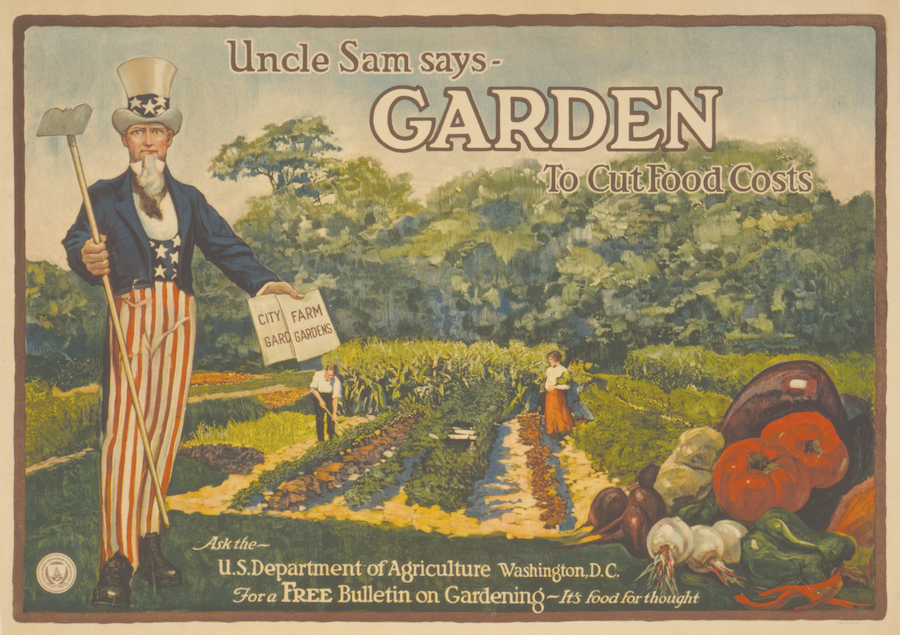Putting the Victory Back in Gardening
go.ncsu.edu/readext?636621
en Español / em Português
El inglés es el idioma de control de esta página. En la medida en que haya algún conflicto entre la traducción al inglés y la traducción, el inglés prevalece.
Al hacer clic en el enlace de traducción se activa un servicio de traducción gratuito para convertir la página al español. Al igual que con cualquier traducción por Internet, la conversión no es sensible al contexto y puede que no traduzca el texto en su significado original. NC State Extension no garantiza la exactitud del texto traducido. Por favor, tenga en cuenta que algunas aplicaciones y/o servicios pueden no funcionar como se espera cuando se traducen.
Português
Inglês é o idioma de controle desta página. Na medida que haja algum conflito entre o texto original em Inglês e a tradução, o Inglês prevalece.
Ao clicar no link de tradução, um serviço gratuito de tradução será ativado para converter a página para o Português. Como em qualquer tradução pela internet, a conversão não é sensivel ao contexto e pode não ocorrer a tradução para o significado orginal. O serviço de Extensão da Carolina do Norte (NC State Extension) não garante a exatidão do texto traduzido. Por favor, observe que algumas funções ou serviços podem não funcionar como esperado após a tradução.
English
English is the controlling language of this page. To the extent there is any conflict between the English text and the translation, English controls.
Clicking on the translation link activates a free translation service to convert the page to Spanish. As with any Internet translation, the conversion is not context-sensitive and may not translate the text to its original meaning. NC State Extension does not guarantee the accuracy of the translated text. Please note that some applications and/or services may not function as expected when translated.
Collapse ▲
On the home front during World War II, there was an interest in sustainability by reducing the need for fuel, materials such as leather and metals, and for families to grow their own food. These gardens would become known throughout the United States as victory gardens and served to redirect commercially grown fruits and vegetables to the war effort in Europe and the Pacific. The government rationed food items like sugar, butter, milk, cheese, eggs, coffee, meat, and canned goods. Labor and transportation shortages made it increasingly difficult to harvest and move commercially grown produce to market. With increased availability of fresh produce at home came the need to preserve and can the bounty to use into the future. For example, in 1943, families bought 315,000 pressure cookers compared to 66,000 in 1942. It was encouraged throughout America to make gardening a family and community effort. According to the US Department of Agriculture, estimates of more than 20 million victory gardens were planted. Fruit and vegetables harvested were estimated to be 9-10 million tons, an amount equal to all commercial production of fresh vegetable at the time. I remember my grandmother talking about the ration books that each family had during the war. An individual could not purchase a rationed item (canned goods, meat, sugar, etc.) without the appropriate ration stamp. To lessen the burden of providing for themselves families began to grow their own food.
Luckily, most of us alive today haven’t lived during a time when the government has rationed everyday food necessities. However, that doesn’t mean you shouldn’t take up home vegetable gardening to decrease the amount you spend on vegetables each year. Saving money is certainly one of the benefits to growing a vegetable garden, however, don’t forget that there are others as well. Gardens are a potential means to increase your confidence in food safety and security. You’ll know where your food is coming from having just harvested produce from your backyard while also getting physical exercise in the process.
North Carolina is fortunate to have a long growing season that begins with the last frost around April 15 through the first frost and freeze of fall around October 27. That’s over a solid 6 months of active plant growth. In the piedmont and coastal plain, there are three overlapping seasons. Cool-season vegetables such as cabbage and lettuce thrive in both spring and fall. Warm-season vegetables such as tomatoes and green beans, need to wait until the soil warms after the last frost date. When beginning the garden in the spring consider growing your own transplants. Start seeds early indoors or in a greenhouse and use season extenders. Frost cloth, high tunnels, and greenhouses provide protection from the cold in late fall, winter, and early spring. Shade cloth can protect from high heat and solar intensity in summer. These techniques, coupled with wise variety selection, make it possible to have fresh food from the garden for much of the year. Starting seeds under florescent bulbs or in a small greenhouse can provide you with healthy seedling in time for planting. Keep in mind that seedlings should be started early (February and March, if not late January) for spring cool-season vegetables.
The location of your vegetable garden is crucial. Nearly all vegetables need full sun and well-drained soil. Your garden also should be located near a source of water. With proper planning, it’s possible to grow two or three crops in a given area during the growing season. Using the same space for two or more crops is called succession planting. Other techniques, such as interplanting and companion planting, are other ways to make efficient use of garden space. The more efficiently you use garden space and resources the larger the potential savings. Do some research and start with a plan. Decide what you want to grow and determine what will be necessary to be successful. Plan your garden on paper first. Research and consider ways to reduce your inputs. Collect rainwater for irrigation, especially if you pay for water. Add compost and well-rotted manure to the garden to improve the soil and reduce the use of fertilizers. Be sure to take a soil sample for the area you’d like to place the garden. Each Extension office in North Carolina has soil sampling boxes and forms for this. Practice the principles of Integrated Pest Management to control insects and diseases, reducing your reliance on pesticides. Start with high-quality seeds – most are relatively inexpensive, and most can be stored for at least one or two years. Find ways to reuse containers, flats, stakes, ties, etc. Remember that saving money with vegetables usually means keeping the costs as low as possible while still growing productive plants. Don’t get discouraged and succumb to defeat; embrace the victory in your garden!
For more information on horticulture and other topics please contact the N.C. Cooperative Extension, Franklin County Center at 919-496-3344 or Colby Griffin, Commercial and Consumer Horticulture Extension Agent, at colby_griffin@ncsu.edu.




